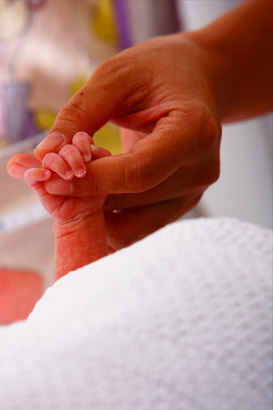
Foetal alcohol spectrum disorder (FASD) is the most common preventable cause of learning disability/difficulty in the UK It is caused by heavy maternal alcohol consumption in early pregnancy, either chronic daily use or binge drinking. A number of factors may exacerbate the effects of alcohol, including:
- The pattern and timing of alcohol consumption
- The stage of foetal development, and
- Social behavioural factors, eg poverty and smoking.
FAS is an umbrella term used to encompass the range of possible effects of prenatal exposure to alcohol. Diagnoses include:
- foetal alcohol syndrome (FAS) – the most easily recognisable condition due to characteristic facial features which are formed during the first trimester of pregnancy and dissipate with age
- foetal alcohol effects (FAE) – the symptoms are not usually visible, e.g. behaviour disorders, attention deficits
- partial foetal alcohol syndrome (pFAS) – some but not all of the criteria for FAS are met
- alcohol related neurodevelopmental disorder (ARND) – can include attention deficits, behaviour disorders, obsessive/compulsive disorder, and
- alcohol related birth defects (ARBD) – includes characteristics such as organ damage, heart defects, sight/hearing problems, skeletal damage and joint defects.
Listen to Ali, the adoptive mother of Jade, a child with FAS, as she explains what FAS is. Notice the variability of the FAS population.

It is estimated that that the current prevalence of FASD in populations of younger school children may be as high as two to five per cent in the USA and some western European countries (May et al, 2009).
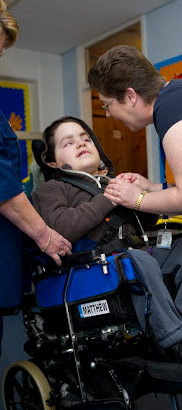
For a diagnosis, four criteria must be met:
- growth deficiency
- characteristic facial features
- central nervous system damage, and
- confirmed alcohol exposure.
Canadian research (O'Malley, 2007) has shown that many children with FAS are initially misdiagnosed with ASD, Asperger syndrome, ADHD, or obsessive compulsive disorder (ODD).
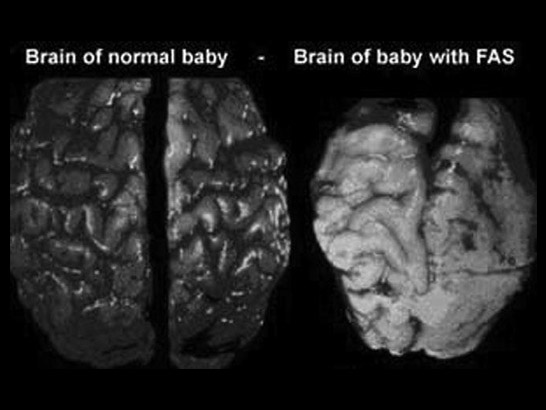
Brain damage is the most serious aspect of FASD. This damage is permanent. It can be accommodated but not reversed. Look at this image. It shows an example of extreme alcohol damage to the brain of a baby with FAS. As with this baby, those who have this degree of damage are unlikely to survive into infancy.

The developmental profile of children with FASD is variable. Expressive language may be in advance of their actual age and their reading skills may be chronologically appropriate. In areas such as social skills and emotional maturity they may be performing at half their developmental age.
Mathematical and numerical concepts are particularly challenging for these children in that, for some, the parietal lobe of the brain, which controls numeracy and computational activity in the brain may have significantly reduced functioning.
Listen to Ali, Jade's mother, again. This time she talks about Jade's 'spiky profile'. Jade has high cognitive skills but her affective skills (skills in emotional areas) and her ability to cope with everyday life are similar to those found in a much younger child.
Characteristics of FAS are individual to each child depending on timing and dosage of maternal alcohol consumption. However, in general, children may be
- Bright in some areas
- Artistic, musical, athletic, have good practical skills
- Friendly, helpful, affectionate and good with younger children, and
- Determined and persistent.
Listen to Jade, a teenager with FAS, talking about the things she likes. Note the many strengths that Jade has.
Likely difficulties
Characteristics of FAS are individual to each child depending on timing and dosage of maternal alcohol consumption. However, in general, children may:
- have difficulty predicting and understanding the consequences of actions
- despite a good vocabulary, struggle to understand what is said to them
- have difficulty in separating fact from fantasy
- display behaviours which will need support, such as lying, stealing, temper tantrums
- have delayed physical, emotional and cognitive development (delayed developmental milestones)
- be easily influenced by others
- have poor impulse control, hyperactivity and poor memory
- experience sensory processing difficulties
- have social communication difficulties, particularly in the areas of interpreting the actions of others and in understanding how to respond in social situations; this is due to their impulsivity and lack of inhibition, and may lead to inappropriate sexual behaviour when older
- have dietary and feeding difficulties/small stature/health problems such as frequent and persistent colds, visual and hearing impairments.
Jade
-
 Jade clip 11:25Listen to this video clip in which Jade describes how she sometimes has difficulty understanding the consequences of her actions and in separating fact from fantasy.
Jade clip 11:25Listen to this video clip in which Jade describes how she sometimes has difficulty understanding the consequences of her actions and in separating fact from fantasy. -
 Jade clip 21:21Listen to this video clip in which Ali, Jade's mother describes Jade's vulnerability.
Jade clip 21:21Listen to this video clip in which Ali, Jade's mother describes Jade's vulnerability. -
 Jade clip 30:41Listen to this video clip in which Ali, Jade's mother describes Jade's sensory processing difficulties.
Jade clip 30:41Listen to this video clip in which Ali, Jade's mother describes Jade's sensory processing difficulties.
In a study by Carpenter (2011), teachers were asked to identify the challenges to the classroom learning environment presented by children with FAS. Here are the top ten:
- Hyperactivity
- Short attention span
- Erratic mood swings
- Poor memory
- Lack of social skills
- Difficulties with auditory/vocal processing
- Difficulties with visual sequencing
- Sensory integration difficulties – particularly lack of coordination
- Poor retention of task instructions, and
- Difficulties with numeracy – mathematics.
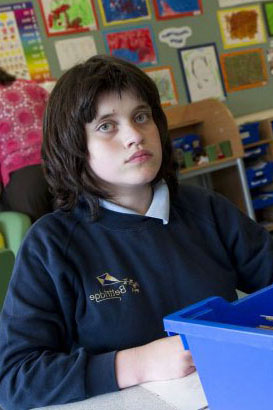
Listen to the short audio clips on the next slide in which Ali talks about Jade's difficulties at school.
Using the list on the previous screen and information from the audio clip, consider how you would respond to having a child with FAS in your classroom. What approaches might work best for each of the learning needs identified above?
Compare your answers with the findings from Carpenter's research on the next screen.
Responding to a child with FAS (1)
-
 Jade clip 41:24
Jade clip 41:24 -
 Jade clip 51:38
Jade clip 51:38 -
 Jade clip 61:53
Jade clip 61:53
The brain damage associated with FAS cannot be reversed so teachers use a variety of approaches to optimise childrens' learning. Carpenter's research led to the identification of ten effective teaching responses to the ten learning needs profiled above:
- A calm learning environment, free from clutter
- Focused tasks presented in small steps
- Personal space for children with plenty of support and praise
- Visual structuring
- Scripting/role play
- Short, key, information-carrying instructions
- Visual clarity and graphic simplicity
- Frequent, short exercise programmes during the day
- A breakdown of tasks with visual and tactile clues and time given for the child to complete the task, and
- Multi-sensory learning which gives messages through a variety of sensory pathways.
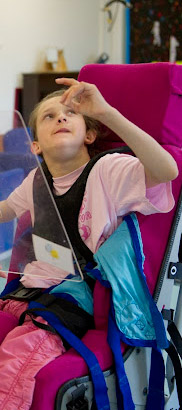
Carpenter (in press) argues that children with complex learning disabilities such as foetal alcohol syndrome are presenting new profiles of learning need that cannot be accommodated through traditional curriculum frameworks. He argues for new and innovative 'practitioner-led, evidence-based approaches to teaching such children that generate personalised curriculum pathways'.
This requires:
- Structured opportunities for the professional development of school staff to ensure that new professional capacities are supported, and
- Effective teamwork involving the child, its family and all the professionals working with them.

Blackburn, C., Carpenter, B. and Egerton, J. (2012) Educating children and young people with Foetal Alcohol Spectrum Disorders: Constructing personalised pathways to learning. Routledge.
Carpenter, B. (2011) Pedagogically bereft! Improving learning outcomes for children with foetal alcohol spectrum disorders. British Journal of Special Education, Vol 38, No 1 pp37 – 43.
Blackburn, C. (2010) Facing the challenge and shaping the future for primary and secondary aged students with Foetal Alcohol Spectrum Disorders (FAS-eD Project). London: NOFAS-UK.
Blackburn, C., Carpenter, B. and Egerton, J. (2010) Shaping the future for children with foetal alcohol spectrum disorders. Support for Learning, 25 (3), 139-145.

British Medical Association (2007) Foetal Alcohol Spectrum Disorders: A guide for healthcare professionals. London: British Medical Association.
Clarren, S. (2004) Teaching Students with FASD. Alberta, Canada: Alberta Learning.
Connor, P. D. and Huggins, J. (2005) Prenatal development: fetal alcohol spectrum disorders. In: K. Thies (ed) Handbook of Human Development for Healthcare Professionals. Sudbury, MA: Jones and Bartlett Fetal Alcohol Syndrome Consultation, Education and Training Services, Inc. Publishers.
Ward, L., Mallett, R., Heslop, P. and Simons, K. (2003) Transition planning: how well does it work for young people with learning disabilities and their families?. British Journal of Special Education, 30 (3),132–137.


